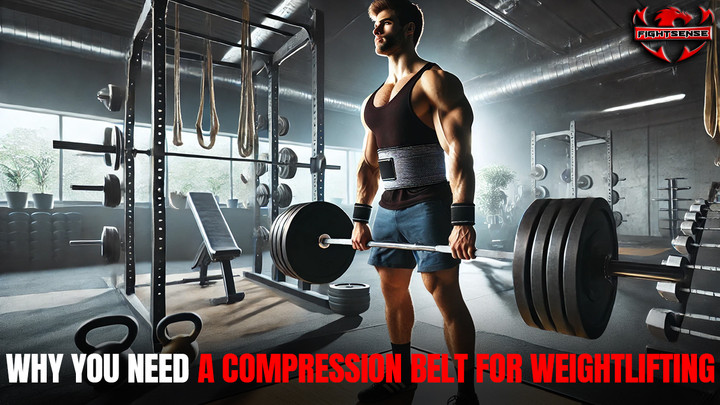Why You Need a Compression Belt for Weightlifting
11th Mar 2025
Safety and performance go hand in hand when it comes to weightlifting. A compression belt is a very important piece of equipment that supports your lower back, keeps your core stable, and helps you have good posture when you lift heavy things.
A solid compression belt may make lifting safer and more successful, whether you're training for strength or pushing your limits. We'll talk about why serious lifters need it and how it can help you lift with confidence and control in this blog.
Key Highlights
- During large lifts, compression belts provide basic support and lower the risk of harm.
- During demanding exercises, a back compression belt improves performance and posture.
- For best support, choose a belt that fits comfortably, is sturdy, and can be adjusted.
- Choose a belt that fits comfortably and is adjustable to suit various lifts.
- Provides mental reassurance when pushing your lifting limits.
What is a Compression Belt?
A weightlifting belt, often called a compression belt, is a piece of training equipment that helps the lower back and abdominal muscles during heavy lifting. It raises intra-abdominal pressure, therefore supporting your spine and enabling you to keep a neutral position and safe from harm.
This is crucial for lowering the strain on your lower back while lifting heavy weights or performing challenging exercises like squats, deadlifts, and overhead presses.
Why Use a Compression Belt?
Core Stability: A compression belt for back helps maintain your core tight, enhancing strength and control during challenging exercises like squats or deadlifts.
Injury Prevention: It provides extra support to your lower back, therefore lowering the danger of damage while hard lifting.
Improved Performance: The extra stability lets you raise longer stretches and more boldly without sacrificing your form.
How Does it Work?
A back compression belt works by making the pressure inside the abdomen higher. This keeps your body stable, supports your spine, and helps you keep good posture when you work out hard. You can lift heavier weights with less risk of injury with this extra aid.
The compression belt for back helps maintain your back straight and lets you lift things more safely and accurately.
Choosing the Best Compression Belt
- Fit: The belt should be comfortable and not constrictive so that breathing is free from trouble.
- Material: Durable materials like leather or neoprene require flexibility and support.
- Width: The 4–6 inch wide belt provides strong back support without restricting movement.
- Adjustability: Choose a belt with movable straps to fit various lifts specifically.
Benefits of Using a Compression Belt
- Injury Prevention: Using a compression back belt helps your lower back, thereby lowering your risk of damage during hard lifts.
- Posture Support: The belt helps to maintain a neutral spine, thus enhancing good form.
- Increased Strength: It helps you stabilise your core, thereby enabling you to raise more weight under better control.
Conclusion
Weightlifters need a compression belt because it gives them support, helps them avoid injuries, and makes them perform better. It keeps your core stable and protects your lower back, which lets you lift securely and effectively.
If you want to get serious about weightlifting, a good compression belt is a good investment that will help you train better and keep your body safe.
Disclaimer
This blog is only for informational needs. Before utilising lifting machinery, always see a competent trainer or healthcare provider, especially if you have pre-existing issues.
FAQs
1. When would I be best wearing a back compression belt?
Use it to assist with lower back support for heavy lifting.
2. Does every lift call for a compression belt?
Not for every lift; however, it helps with heavy, weight-intensive sessions.
3. The compression belt should have what tightness?
It should be snug yet not uncomfortable, supporting your back without impeding motion.
4. Are compression belts something novices should use?
Indeed, extra help is beneficial for novices, particularly when lifting larger weights.
5. Can I spend extended times wearing the belt?
For heavy lifting, that is ideal. Steer clear of wearing it all day or for less intense workouts.

